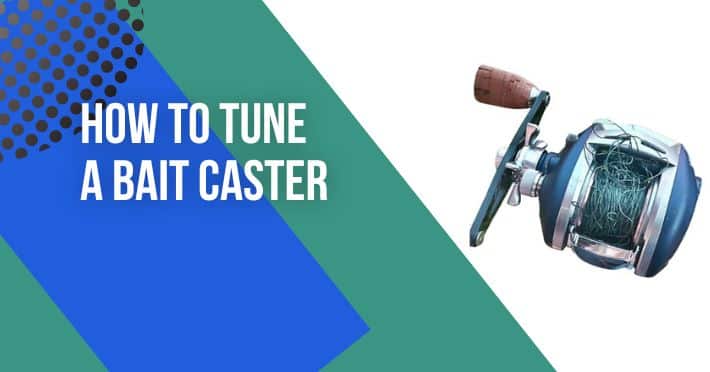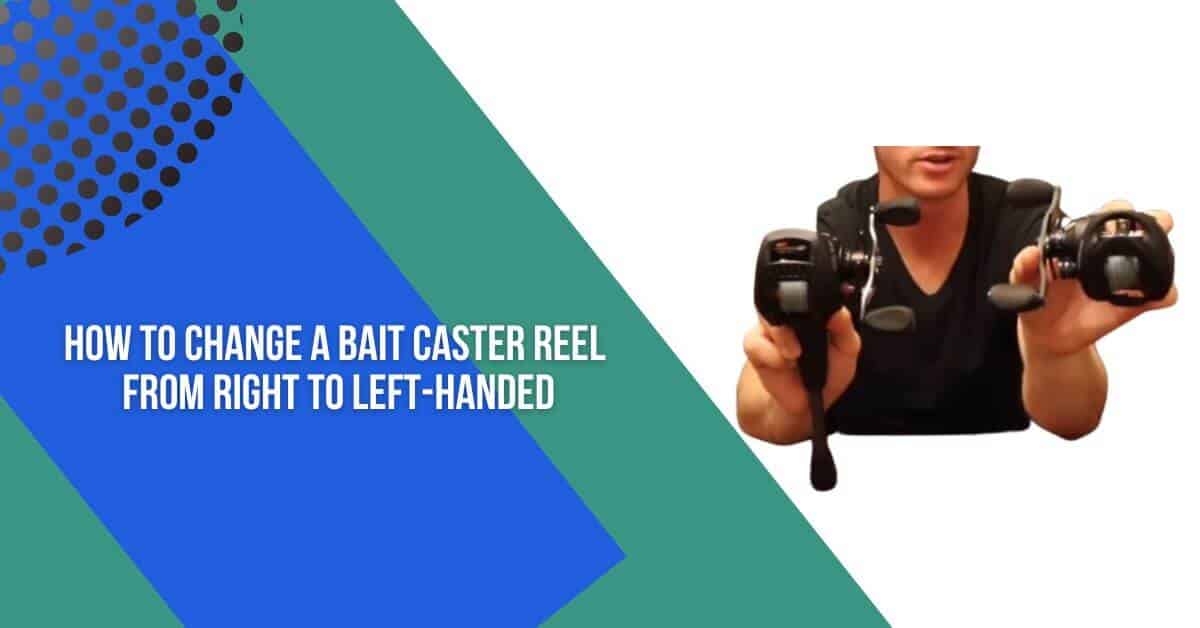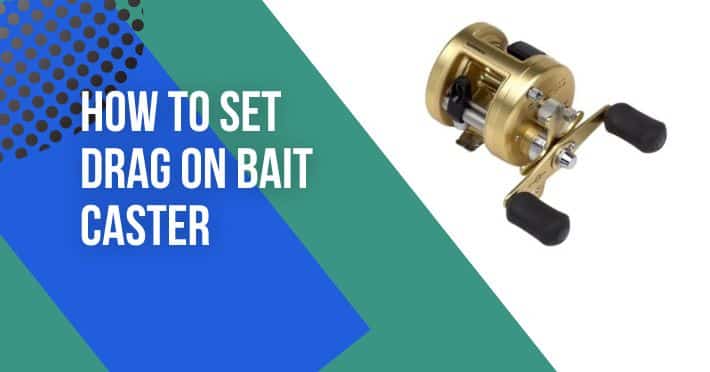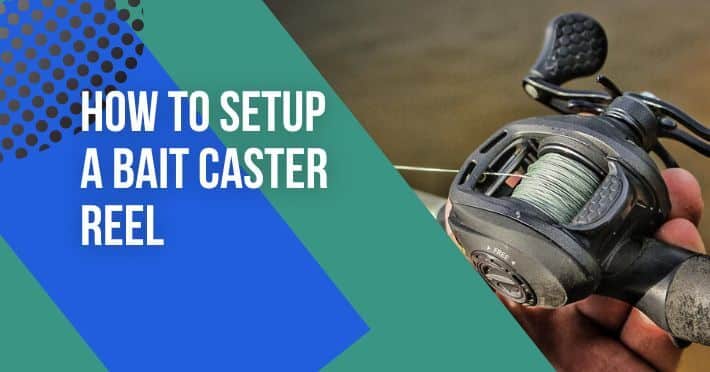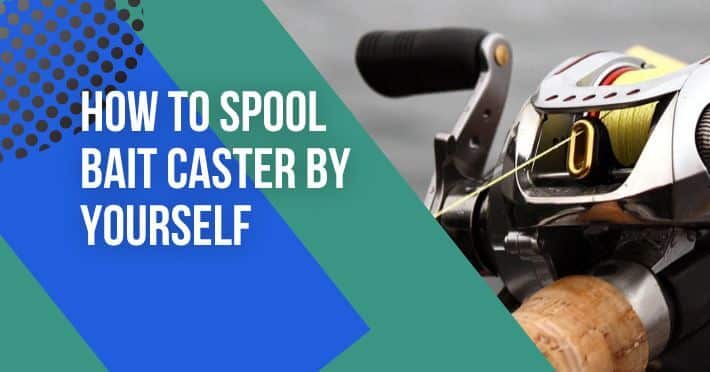Contents
- 1 Fly Fishing For Redfish:
- 2 Shallow Saltwater Flats And Marshy Areas:
- 3 Abundant Food Sources:
- 4 Temperature and Oxygen Levels:
- 5 Protection and Shelter:
- 6 Accessibility:
- 7 Breeding Grounds:
- 8 Visual Opportunities for Anglers:
- 9 Tidal Influence:
- 10 Ecosystem Diversity:
- 11 Importance Of Saltwater-Specific Flies:
- 12 Corrosion Resistance:
- 13 Hook Strength:
- 14 Weighted Designs:
- 15 Imitation of Saltwater Prey:
- 16 Buoyancy and Water Resistance:
- 17 Versatility in Various Conditions:
- 18 Resistance to UV Damage:
- 19 Large Profile and Visibility:
- 20 Fly Selection:
- 21 Matching the Hatch:
- 22 Water Clarity:
- 23 Fly Size:
- 24 Fly Patterns:
- 25 Weighted Flies:
- 26 Surface Flies:
- 27 Versatility:
- 28 Seasonal Considerations:
- 29 Observation:
- 30 Experimentation:
- 31 Conclusion:
- 32 FAQs:
- 33 1. What is the best time of year for fly fishing for redfish?
- 34 2. What is the ideal fly rod weight for redfish?
- 35 3. How important is stealth when fly fishing for redfish?
- 36 4. What are some effective fly patterns for redfish?
- 37 5. Do I need a specialized reel for saltwater fly fishing?
- 38 6. How important is tide when fly fishing for redfish?
- 39 7. Can I sightfish for redfish with a fly rod?
- 40 8. Is catch-and-release common in fly fishing for redfish?
- 41 9. What are some challenges of fly fishing for redfish?
- 42 10. Are there specific regulations for fly fishing for redfish?
Welcome to the exhilarating world of fly fishing for redfish! Whether you’re a seasoned angler or a newcomer to the sport, chasing these vibrant and powerful fish with a fly rod in hand offers a unique and rewarding experience. Redfish, known for their strength and tenacity, are a prized catch among fly fishermen, especially in coastal waters.
In fly fishing for redfish, precision and finesse are key. These copper-colored bruisers are often found in shallow, saltwater flats and marshy areas, making stealth and accurate casting essential.
Equip yourself with the right gear, including a reliable fly rod, reel, and saltwater-specific flies designed to mimic the prey of redfish.
Patience is a virtue in this pursuit, as you stalk these fish in their natural habitat, looking for telltale signs like tailing or pushing water. Mastering the art of presenting your fly in a way that entices a strike requires skill and practice, but the thrill of a redfish taking the fly is unparalleled.
Join the ranks of anglers who find solace and excitement in the rhythm of the cast and the anticipation of the strike. Whether you’re exploring coastal flats, tidal creeks, or mangrove-lined shores, fly fishing for redfish promises an unforgettable adventure filled with the beauty of nature and the challenge of a worthy adversary.
So, grab your gear, wade into the shallows, and immerse yourself in the captivating world of fly fishing for redfish!
Fly Fishing For Redfish:
Fly fishing for redfish is an exhilarating pursuit that combines the artistry of fly casting with the excitement of targeting powerful and tenacious redfish in shallow saltwater environments. Redfish, also known as red drum, are prized for their strength, challenging anglers to employ finesse and precision in their approach.
This angling adventure typically unfolds in coastal flats, marshes, and mangrove-lined shores where redfish thrive. Anglers often wade through shallow waters, stalking their prey with a fly rod. The experience involves carefully observing the surroundings for signs of redfish activity, such as tailing or pushing water.
The gear used in fly fishing for redfish is specialized for saltwater conditions, including a sturdy fly rod, reel, and saltwater-specific flies designed to mimic the prey of redfish. Success in this pursuit relies on the angler’s ability to present the fly with accuracy and entice a strike from these remarkable fish.
Fly fishing for redfish isn’t just about the catch; it’s a holistic experience that immerses anglers in the beauty of coastal ecosystems. The pursuit demands patience, skill, and an understanding of the fish’s behavior, making it a challenging yet gratifying endeavor for anglers seeking a unique connection with nature and a formidable adversary in redfish.
Shallow Saltwater Flats And Marshy Areas:
Shallow saltwater flats and marshy areas serve as prime habitats for redfish, creating an enticing environment for fly fishing enthusiasts. Here’s a closer look at why these locations are significant:
Abundant Food Sources:
- Shallow flats and marshes are rich in nutrients, attracting a variety of prey that redfish feed on. This abundance of food makes these areas ideal for redfish to forage and grow.
Temperature and Oxygen Levels:
- The relatively shallow nature of these environments allows for quick warming, making them suitable for redfish seeking optimal water temperatures.
- The flats and marshes often provide a balance of oxygen levels crucial for the well-being of redfish.
Protection and Shelter:
- The intricate network of seagrasses, oyster beds, and marsh vegetation serves as a refuge for juvenile fish, protecting them from larger predators.
- Redfish use these areas to shelter or evade predators during adverse weather conditions.
Accessibility:
- Shallow waters in flats and marshes make it easier for anglers to access areas where redfish congregate. This accessibility enhances the overall fly fishing experience.
Breeding Grounds:
- These environments often serve as important spawning and nursery grounds for redfish. Female redfish release their eggs in these shallow waters, contributing to the replenishment of the population.
Visual Opportunities for Anglers:
- The clear, shallow waters of flats allow anglers to visually spot redfish, especially when they exhibit behaviors like tailing or pushing water. This adds an element of sight fishing, requiring keen observation and stealth.
Tidal Influence:
- Flats and marshes are influenced by tidal movements, creating dynamic conditions that affect redfish behavior. Understanding tidal patterns is crucial for successful fly fishing in these areas.
Ecosystem Diversity:
- These habitats are often diverse ecosystems, supporting various species of fish, crustaceans, and other marine life. This diversity contributes to the overall health and resilience of the redfish population.
For fly anglers, these environments present both challenges and opportunities. Navigating the shallow waters, reading the signs of redfish activity, and presenting flies effectively in these dynamic settings add layers of complexity to the fly fishing experience, making it a thrilling and rewarding pursuit.
Importance Of Saltwater-Specific Flies:
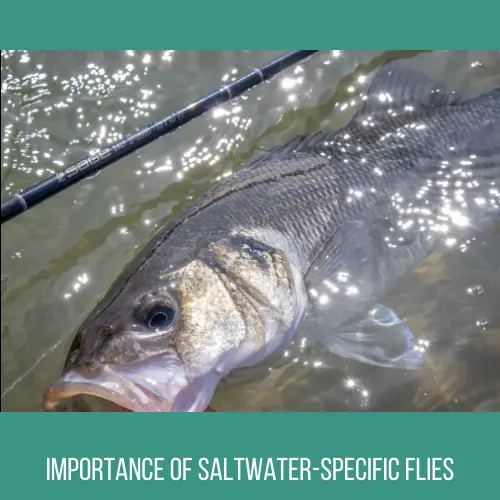
The use of saltwater-specific flies is paramount in fly fishing for redfish and other saltwater species due to the unique challenges and conditions present in marine environments. Here are several reasons highlighting the importance of these specialized flies:
Corrosion Resistance:
withstand Saltwater is corrosive, and standard flies designed for freshwater use may not the harsh saltwater environments. Saltwater-specific flies are crafted with corrosion-resistant materials, ensuring durability and longevity.
Hook Strength:
Saltwater species, including redfish, often have powerful strikes and robust mouths. Saltwater flies are equipped with stronger hooks to handle the strength and tenacity of these fish, reducing the risk of hook failure during the fight.
Weighted Designs:
Saltwater flies are typically weighted to help them sink quickly in deeper waters or reach the strike zone in flats with strong currents. This is crucial for presenting the fly at the right depth to entice redfish, which may be holding at various levels in the water column.
Imitation of Saltwater Prey:
Saltwater environments host a diverse range of prey, such as shrimp, crabs, and baitfish, that redfish commonly feed on. Saltwater flies are specifically designed to mimic these prey items in terms of size, color, and movement, making them more enticing to redfish.
Buoyancy and Water Resistance:
Saltwater flies are constructed to resist water absorption and maintain buoyancy, allowing them to remain effective even after repeated casts. This is important for achieving a natural presentation and enticing strikes from wary redfish.
Versatility in Various Conditions:
Saltwater-specific flies are designed to perform well in a variety of saltwater conditions, including flats, marshes, and deeper coastal waters. This versatility makes them suitable for a broad range of fly-fishing scenarios.
Resistance to UV Damage:
Exposure to sunlight, particularly UV radiation, is higher in saltwater environments. Saltwater flies are often treated or constructed with materials that resist UV damage, ensuring they retain their effectiveness and appearance over time.
Large Profile and Visibility:
Many saltwater flies are tied with a larger profile to attract the attention of predatory fish like redfish. The increased visibility is especially important in saltwater flats where anglers often sight fish and need flies that are easily seen by the target.
Using saltwater-specific flies enhances the overall success of fly fishing in marine environments, providing anglers with the right tools to effectively present their flies to redfish and other saltwater species. It’s a key component of the angler’s arsenal when pursuing these challenging and exciting game fish in coastal waters.
Fly Selection:
Selecting the right fly is a critical aspect of successful fly fishing for redfish. The choice of fly depends on various factors, including the prevailing conditions, the specific habitat you’re fishing in, and the natural prey of redfish. Here are some considerations for fly selection:
Matching the Hatch:
Observe the local environment and take note of the prevalent prey species. Choose flies that closely mimic the size, color, and behavior of the natural food sources for redfish, such as shrimp, crabs, and baitfish.
Water Clarity:
In clear water conditions, opt for more realistic and natural-colored flies. When the water is murky or stained, consider using flies with brighter colors or those that create more contrast to improve visibility for the fish.
Fly Size:
Redfish can be selective based on the size of the prey available. Have a variety of fly sizes in your tackle box to match different forage items. Smaller flies may be effective for subtle presentations, while larger patterns can attract more aggressive strikes.
Fly Patterns:
Carry a selection of fly patterns that imitate the various stages of common prey items. For example, have flies that represent both juvenile and adult shrimp, crab patterns for bottom-feeding redfish, and baitfish imitations for schools of feeding fish.
Weighted Flies:
Depending on the water depth and current conditions, use flies with appropriate weight to ensure they sink to the desired depth quickly. Weighted flies are essential for reaching redfish in deeper waters or areas with strong currents.
Surface Flies:
Redfish can be found feeding at or near the surface, especially in shallow flats. Carry surface flies like poppers or gurglers to entice strikes from redfish that are willing to strike at prey on the water’s surface.
Versatility:
Have a selection of versatile flies that can adapt to changing conditions. Flies that can be retrieved at different speeds or with various retrieves give you the flexibility to adjust to the preferences of the redfish on a given day.
Seasonal Considerations:
Be aware of the seasonal patterns of the prey species and adjust your fly selection accordingly. For example, during crab molting season, crab-pattern flies may be particularly effective.
Observation:
Pay close attention to the behavior of redfish and their feeding habits. If you observe tailing or other specific behaviors, adjust your fly selection to match the type of prey they are targeting.
Experimentation:
Don’t be afraid to experiment with different flies until you find what works best on a given day. Redfish can be selective, and their preferences may change based on factors like weather, tide, and water clarity.
Remember that successful fly selection involves a combination of observation, knowledge of the local ecosystem, and adaptability. Having a well-rounded assortment of flies and being able to make informed decisions based on the fishing conditions will increase your chances of enticing strikes from redfish.
Conclusion:
In conclusion, fly fishing for redfish is a captivating pursuit that blends the artistry of fly casting with the thrill of targeting powerful and resilient fish in their coastal habitats. The unique challenge
s of shallow saltwater flats and marshy areas demand precision, adaptability, and an understanding of the redfish’s behavior. Armed with specialized gear, including saltwater-specific flies, anglers embark on an immersive journey that goes beyond the catch—it’s a connection with nature, a test of skill, and an unforgettable adventure.
So, whether you’re a seasoned angler or a novice, step into the world of fly fishing for redfish, where each cast tells a story and every strike is a triumph against the backdrop of coastal beauty.
FAQs:
Certainly! Here are some frequently asked questions (FAQs) about fly fishing for redfish:
1. What is the best time of year for fly fishing for redfish?
Redfish can be caught throughout the year, but many anglers find success in the late spring to early fall. However, it’s important to consider regional variations and local conditions.
2. What is the ideal fly rod weight for redfish?
A 7 to 9-weight fly rod is commonly recommended for redfish. The choice depends on the size of the flies you’ll be using and the prevailing conditions in the fishing area.
3. How important is stealth when fly fishing for redfish?
Stealth is crucial. Redfish in shallow waters can be easily spooked, so approach quietly, avoid making unnecessary noise, and make deliberate, accurate casts.
4. What are some effective fly patterns for redfish?
Effective fly patterns include crab imitations, shrimp patterns, and baitfish imitations. Popular choices include Clouser Minnows, EP Crabs, and Spoon Flies.
5. Do I need a specialized reel for saltwater fly fishing?
Yes, a saltwater-specific fly reel is recommended. It should have corrosion-resistant materials and a strong drag system to handle the powerful runs of redfish.
6. How important is tide when fly fishing for redfish?
Tidal movements significantly influence redfish behavior. Understanding tidal patterns and fishing during incoming or outgoing tides can improve your chances of success.
7. Can I sightfish for redfish with a fly rod?
Yes, sight fishing is a common and exciting method for fly fishing for redfish. Look for signs like tailing or pushing water and stalk the fish carefully for a well-placed cast.
8. Is catch-and-release common in fly fishing for redfish?
Yes, catch-and-release is often practiced to conserve redfish populations. Proper handling techniques and quick releases contribute to the sustainability of the fishery.
9. What are some challenges of fly fishing for redfish?
Challenges include adapting to changing conditions, accurate casting in windy environments, and understanding the varied behaviors of redfish in different habitats.
10. Are there specific regulations for fly fishing for redfish?
Check local fishing regulations as they can vary. Some areas may have specific rules regarding catch limits, slot sizes, and seasonal closures to protect the redfish population.
Remember that local conditions and regulations can vary, so it’s essential to stay informed and adapt your approach accordingly. Enjoy the adventure of fly fishing for redfish and always prioritize the conservation of these remarkable fish.


